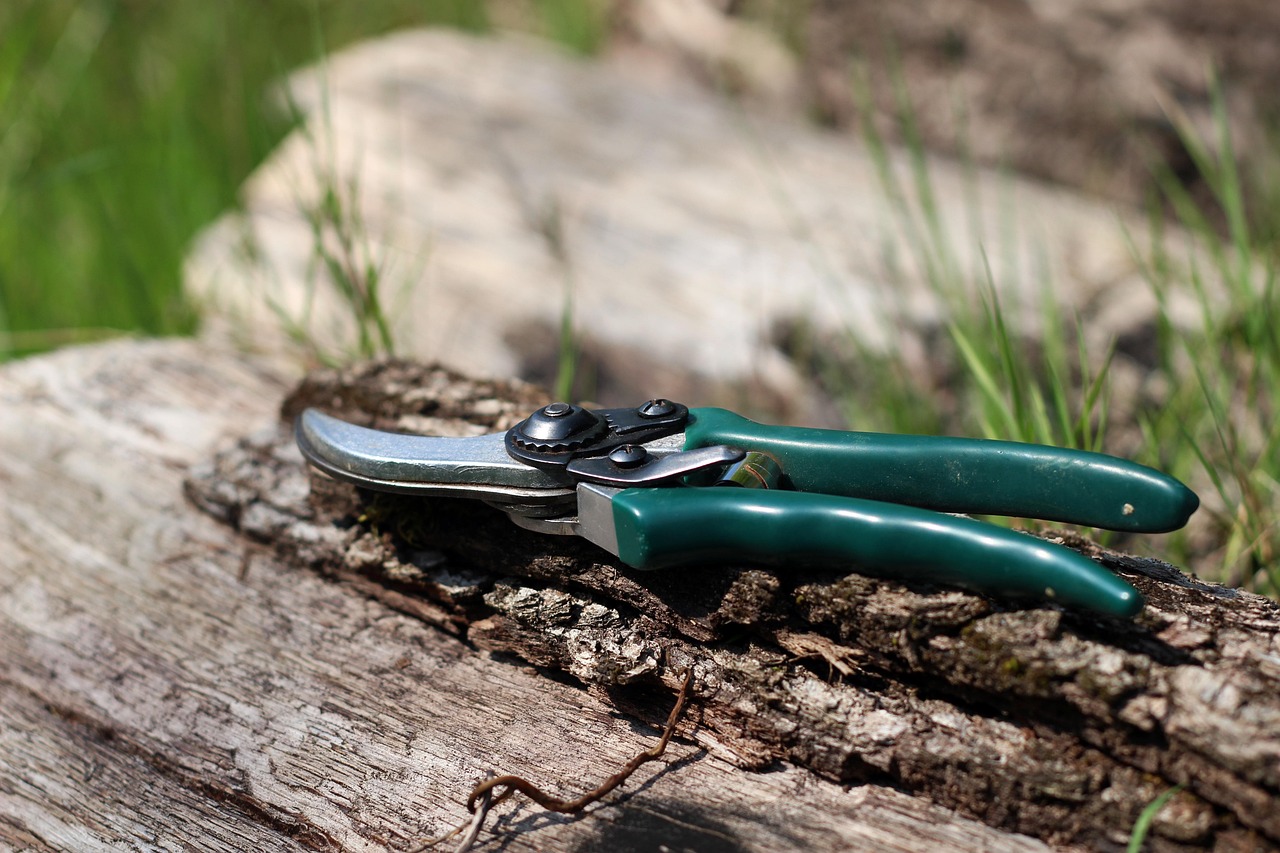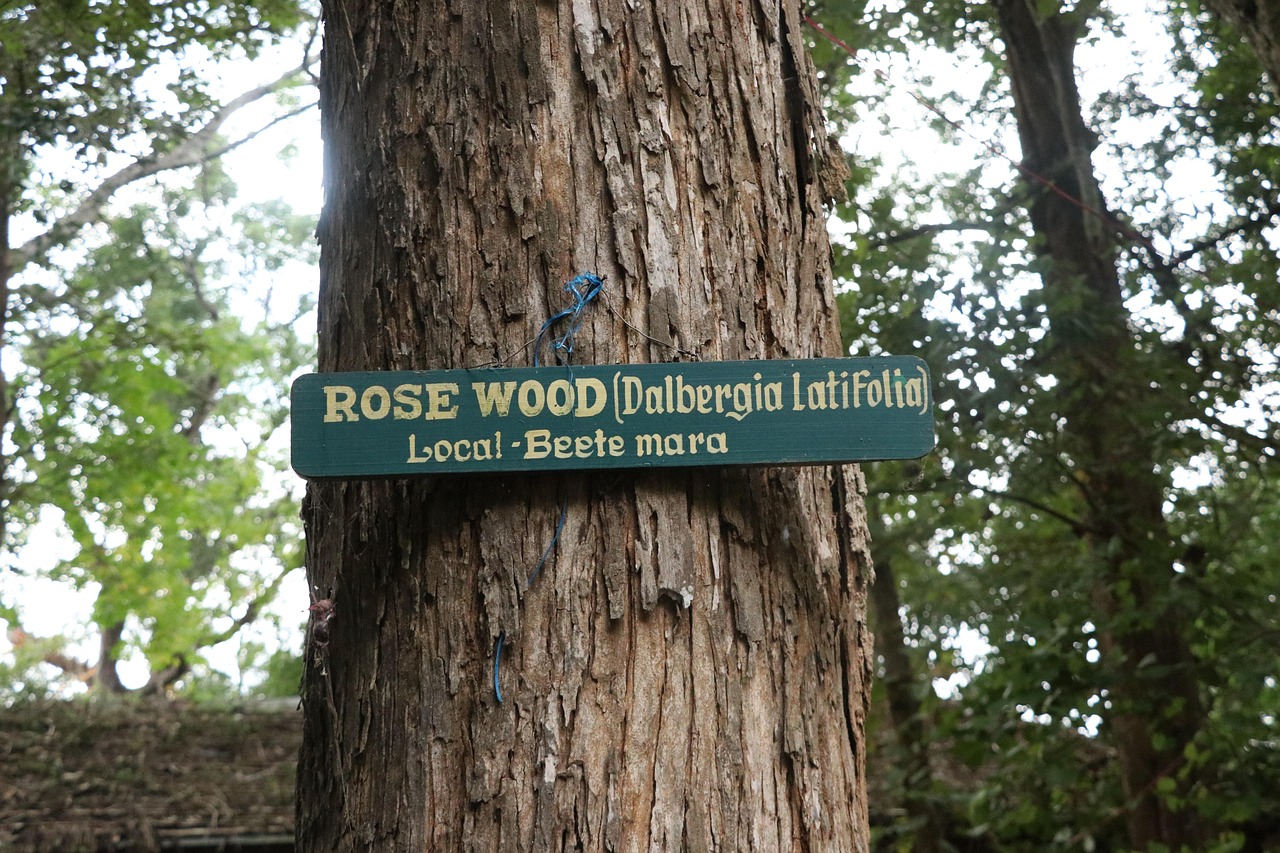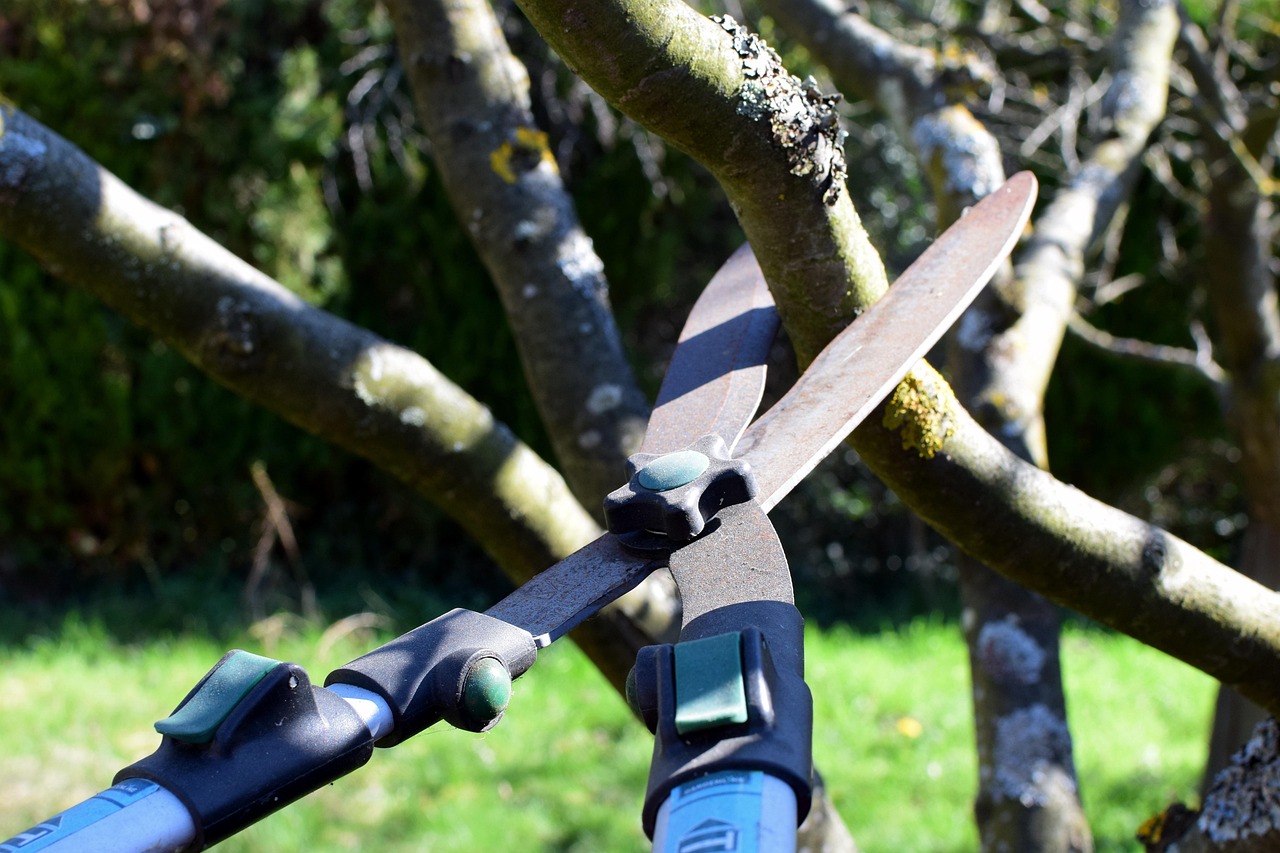Seasonal pruning of rosewood trees is essential for promoting healthy growth, enhancing flower production, and maintaining the tree’s shape. Prune during the right seasons and use proper techniques to ensure the best results.
Rosewood trees, known for their beautiful foliage and aromatic wood, are cherished in many gardens and landscapes. These trees thrive in tropical and subtropical climates and can grow quite large, reaching heights of up to 100 feet. To keep them healthy and visually appealing, seasonal pruning is crucial. This practice not only encourages new growth but also helps manage the tree’s size and shape, making it easier to maintain.

Understanding the right time to prune rosewood trees is key to their health. Generally, the best times to prune are early spring and late fall. However, the specific timing may vary depending on the local climate and the specific variety of rosewood. Pruning too early or too late can lead to damage or hinder growth.
Why Prune Rosewood Trees?
Pruning serves several important purposes in maintaining rosewood trees:
- Encourages New Growth: Pruning stimulates new shoots, leading to a fuller tree.
- Improves Air Circulation: Thinning out branches allows better airflow, reducing the risk of disease.
- Enhances Appearance: Regular pruning helps maintain a desired shape and size.
- Removes Dead or Diseased Wood: This prevents the spread of disease and keeps the tree healthy.
In addition to these benefits, pruning can help manage the tree’s overall health by allowing more sunlight to reach the inner branches. This is particularly important for rosewood trees, as they can become dense over time. Regular maintenance ensures that every part of the tree receives adequate light and nutrients.

When to Prune Rosewood Trees
The timing of pruning is crucial for the health of rosewood trees. Here are key periods to consider:
| Time of Year | Recommended Actions |
|---|---|
| Early Spring | Remove dead or damaged branches. Shape the tree as needed. |
| Late Fall | Thin out dense areas. Remove any remaining dead wood. |
In early spring, before new growth begins, it is ideal to remove any dead or damaged branches. This helps the tree focus its energy on healthy growth. Additionally, shaping the tree during this time can provide a more aesthetically pleasing appearance as it begins to bloom.
In late fall, after the growing season has ended, thinning out dense areas can improve airflow. This is also a good time to remove any lingering dead wood. By doing so, you prepare the tree for a strong start in the spring.

Pruning Techniques for Rosewood Trees
Using the right techniques when pruning rosewood trees is essential for ensuring their health and longevity. Here are some effective techniques:
- Use Sharp Tools: Always use sharp and clean pruning shears or saws to make clean cuts.
- Avoid Topping: Never cut off the top of a branch indiscriminately, as this can lead to weak growth.
- Make Clean Cuts: Cut just above a bud or lateral branch to encourage new growth in the desired direction.
- Prune at an Angle: Cutting at a slight angle helps water runoff and prevents rot.
By following these techniques, you ensure that each cut promotes healthy growth. Proper pruning can significantly influence how well your rosewood tree flourishes over time.
Moreover, ensuring that your tools are clean helps prevent the transmission of diseases from one plant to another. This practice is particularly important in maintaining a healthy garden ecosystem.

Common Mistakes to Avoid When Pruning
Pruning can be straightforward, but there are several common mistakes to watch out for:
- Over-Pruning: Removing too many branches can shock the tree and inhibit growth.
- Ineffective Timing: Pruning at the wrong time can damage the tree or reduce flowering.
- Neglecting Safety: Always wear protective gear when using sharp tools to prevent injuries.
Avoiding these mistakes ensures that your rosewood tree remains healthy and continues to thrive in your landscape. Taking care during the pruning process can save you from potential setbacks later on.
Seasonal pruning is a vital practice for rosewood trees. Understanding when and how to prune effectively will help ensure that these beautiful trees continue to grace your landscape with their beauty and strength.
Tools Needed for Pruning Rosewood Trees
Having the right tools is essential for effective pruning. Using proper equipment not only makes the process easier but also enhances the health of your rosewood trees. Below are some essential tools you will need:
- Pruning Shears: Ideal for cutting small branches and stems. Look for bypass shears for clean cuts.
- Loppers: Useful for larger branches that are too thick for pruning shears. They provide more leverage.
- Saws: For cutting very thick branches, a pruning saw is necessary. Choose one with a sharp blade for efficiency.
- Gloves: Protect your hands from thorns and sharp edges while handling tools and branches.
- Protective Eyewear: Important for keeping your eyes safe from falling debris during pruning.
Using high-quality tools ensures that you make clean cuts, which reduces the risk of disease entering the plant. Always clean your tools before and after use to prevent the spread of pathogens between plants.
Pruning Techniques for Different Growth Stages
Rosewood trees undergo various growth stages, and each stage requires specific pruning techniques. Understanding these can help you achieve the desired outcome.
Young Rosewood Trees
For young rosewood trees, the focus should be on establishing a strong structure. Here are some techniques to employ:
- Central Leader Approach: Choose a central leader branch to promote upward growth. Remove competing branches to ensure one strong trunk.
- Thinning: Thin out crowded growth to allow sunlight to penetrate. This encourages healthy branching.
- Pinching Tips: Pinch back the tips of young shoots to encourage bushier growth and prevent spindly branches.
Mature Rosewood Trees
Mature trees require more maintenance to maintain their shape and health. Consider the following techniques:
- Selective Pruning: Remove selectively to enhance airflow without compromising the overall shape.
- Deadwooding: Regularly remove dead or diseased branches to prevent decay from spreading.
- Shaping: Correct any imbalances in growth by trimming back overgrown areas to maintain an attractive form.
The Role of Fertilization After Pruning
Fertilization plays an important role in the health of rosewood trees, especially after pruning. Proper nutrients support recovery and encourage new growth. Here are some key points regarding fertilization:
- Timing: Fertilize immediately after pruning to give the tree a nutrient boost when it needs it most.
- Type of Fertilizer: Use a balanced fertilizer that contains nitrogen, phosphorus, and potassium for optimal growth.
- Application Method: Apply fertilizer evenly around the root zone, avoiding direct contact with the trunk.
By ensuring that your rosewood tree receives adequate nutrients after pruning, you promote faster healing and vigorous new growth. Remember to water well after fertilization to help the nutrients reach the roots effectively.
Pest and Disease Management Post-Pruning
Post-pruning, it is crucial to monitor your rosewood trees for signs of pests and diseases. Pruning can sometimes stress the tree and make it more susceptible. Here are some strategies for effective management:
- Regular Inspections: Frequently check leaves, branches, and the trunk for signs of infestation or disease.
- Pest Control: Use organic pesticides if necessary, focusing on targeted treatments that minimize harm to beneficial insects.
- Disease Prevention: Ensure proper air circulation and avoid overwatering to prevent fungal infections.
A proactive approach to pest and disease management can save your rosewood trees from severe damage. By staying vigilant, you can address issues before they become significant problems.
Seasonal Considerations for Different Regions
The timing and techniques for pruning can vary depending on geographic location. Different climates can affect when and how you should prune your rosewood trees:
| Region | Best Pruning Time | Special Considerations |
|---|---|---|
| Tropical | Year-Round with Focus on Growth Cycles | Avoid pruning during heavy rains to reduce disease risk. |
| Subtropical | Early Spring and Late Fall | Monitor temperatures to avoid frost damage post-pruning. |
| Temperate | Late Winter to Early Spring | Avoid pruning during dormancy to minimize stress on the tree. |
Understanding regional differences in climate can help you tailor your pruning practices effectively. This localized approach ensures that your rosewood trees receive the care they need based on their environmental conditions.
The care and attention you provide during seasonal pruning will have lasting effects on the health and beauty of your rosewood trees. By employing the right techniques and methods, you can ensure their vitality for years to come.
Signs of a Healthy Rosewood Tree
Understanding the signs of a healthy rosewood tree is crucial for effective maintenance and pruning. A healthy tree will show certain characteristics that indicate it is thriving and growing well. Here are some key signs to look for:
- Vibrant Foliage: Healthy leaves should be lush and green, without discoloration or spots.
- Strong Growth: New growth should be evident, especially during the growing season, with fresh shoots appearing regularly.
- Stable Structure: The trunk and main branches should be strong and upright, showing no signs of leaning or weakness.
- Good Flower Production: Healthy rosewood trees will produce a significant number of flowers during their blooming season.
Regularly observing these signs can help you identify any potential issues early on. If your rosewood tree exhibits any signs of distress, it may require immediate attention to avoid further complications.
Identifying Common Pests and Diseases
Pest infestations and diseases can pose significant threats to rosewood trees. Identifying these issues early can help you take action before they become severe. Here are some common pests and diseases to watch for:
Pests
- Aphids: Small, soft-bodied insects that suck sap from leaves, causing discoloration and stunted growth.
- Spider Mites: Tiny pests that create fine webs on foliage, leading to yellowing leaves and overall decline.
- Scale Insects: These pests appear as small bumps on branches and leaves, depriving the tree of nutrients.
Diseases
- Powdery Mildew: A fungal disease characterized by a white powdery coating on leaves, which can hinder photosynthesis.
- Root Rot: Caused by overwatering, this disease leads to wilting and yellowing leaves as roots decay.
- Canker: This disease creates lesions on branches and stems, which can eventually kill the affected areas if left untreated.
If you notice any of these pests or diseases, prompt action is essential. Early intervention can often prevent serious damage to your rosewood trees.
Effective Pest Control Strategies
Managing pests requires a combination of prevention and treatment strategies. Here are some effective methods for controlling pests on rosewood trees:
- Natural Predators: Introduce beneficial insects like ladybugs or lacewings that feed on aphids and other harmful pests.
- Neem Oil: This natural pesticide is effective against many pests. Apply it according to package instructions for best results.
- Insecticidal Soap: A gentle option for controlling soft-bodied insects without harming beneficial species. Apply directly to affected areas.
- Cultural Practices: Maintain proper watering and fertilization practices to keep the tree strong and less susceptible to pests.
Implementing these strategies can help maintain a healthy ecosystem around your rosewood trees while effectively managing pest populations.
Fostering Healthy Growth Through Maintenance
Maintaining the overall health of your rosewood tree goes beyond just pruning. Regular maintenance practices can significantly contribute to its well-being. Here are some key maintenance tips:
Watering Practices
Proper watering is critical for the health of rosewood trees. Consider the following practices:
- Deep Watering: Water deeply but infrequently to encourage deep root growth. Aim for about 1 inch of water per week during dry periods.
- Avoid Overwatering: Ensure that the soil has good drainage to prevent root rot. Check for signs of excess moisture.
- Mulching: Apply organic mulch around the base of the tree to retain moisture and suppress weeds. Keep mulch a few inches away from the trunk.
Nutrient Management
Nutrient management is equally important for the healthy growth of rosewood trees. Here are some tips:
- Soil Testing: Conduct soil tests to determine nutrient levels and pH balance, allowing you to adjust fertilization accordingly.
- Organic Fertilizers: Use organic options like compost or well-rotted manure to provide essential nutrients without chemical additives.
- Avoid Over-Fertilization: Too much fertilizer can harm the tree. Follow recommended application rates based on soil tests.
The Importance of Seasonal Care
Caring for rosewood trees is an ongoing process that requires attention throughout the seasons. Each season brings different care needs that can affect the overall health of your tree. Here’s a breakdown of seasonal care practices:
| Season | Main Care Activities | Additional Tips |
|---|---|---|
| Spring | Pruning, Fertilization, Pest Inspection | Monitor for new growth and emerging pests. |
| Summer | Irrigation, Pest Control, Mulching | Avoid watering in the evening to reduce fungus risk. |
| Fall | Thinning, Disease Inspection, Final Watering | Prepare for winter by ensuring adequate hydration. |
| winter | No major activities; monitor for damage | Avoid disturbing dormant trees unless necessary. |
This seasonal approach ensures that your rosewood trees receive comprehensive care tailored to their needs throughout the year. By remaining attentive to their requirements during each season, you can foster robust growth and longevity in your trees.
Additional Considerations for Rosewood Tree Care
While seasonal pruning is vital for maintaining the health of rosewood trees, there are additional considerations that can enhance their growth and resilience. Understanding these factors can lead to better overall management and care.
Soil Quality and Composition
The quality of soil directly impacts the health of your rosewood trees. Here are some key aspects to consider:
- Soil Type: Rosewood trees prefer well-drained, loamy soil. Sandy soils can provide good drainage, while clay soils may retain too much moisture.
- pH Levels: Aim for a slightly acidic to neutral pH (between 6.0 and 7.0). Testing your soil will help you determine if amendments are necessary.
- Organic Matter: Incorporate compost or well-rotted manure into the soil to improve fertility and structure. This enhances the tree’s nutrient uptake.
Taking steps to ensure high soil quality can greatly affect how well your rosewood trees grow and thrive in your landscape.
Climate Adaptation
Rosewood trees are adaptable but thrive best in specific climate conditions. Here are some adaptability considerations:
- Temperature Fluctuations: Protect young trees from extreme temperature variations, especially in regions with harsh winters or intense summers.
- Humidity Levels: Maintaining adequate humidity can be beneficial, particularly in dry climates. Consider misting or planting companion plants that retain moisture.
- Sun Exposure: Ensure that rosewood trees receive ample sunlight, ideally 6 to 8 hours per day, which supports healthy growth and flowering.
By understanding and managing climate-related factors, you can create an optimal environment for your rosewood trees.
Long-Term Management Strategies
Long-term management involves not just seasonal tasks but also planning for the future health of your rosewood trees. Here are some strategies:
- Regular Monitoring: Keep an eye on tree health throughout the year. Look for signs of stress, pests, or diseases.
- Pruning Schedule: Establish a consistent pruning schedule based on your region’s climate and growth patterns. This will ensure that you do not miss critical windows for care.
- Education and Resources: Continuously educate yourself about best practices in arboriculture. Join local gardening clubs or online forums focused on tree care.
Implementing these long-term strategies will help ensure that your rosewood trees not only survive but thrive for many years.
Conclusion
Seasonal pruning and comprehensive care are essential for the health and beauty of rosewood trees. By understanding the right techniques, tools, and timing, you can effectively manage their growth and prevent potential issues such as pests and diseases. Regular monitoring and appropriate cultural practices, including proper soil management and climate considerations, contribute significantly to their vitality.
The journey of caring for rosewood trees is ongoing and rewarding. With the right knowledge and practices, you can cultivate robust trees that enhance your landscape’s beauty and ecological health. Embrace the seasons and adapt your care strategies, ensuring that your rosewood trees flourish in every stage of their life cycle. Through dedicated attention and informed practices, you will enjoy the many benefits these magnificent trees offer.
